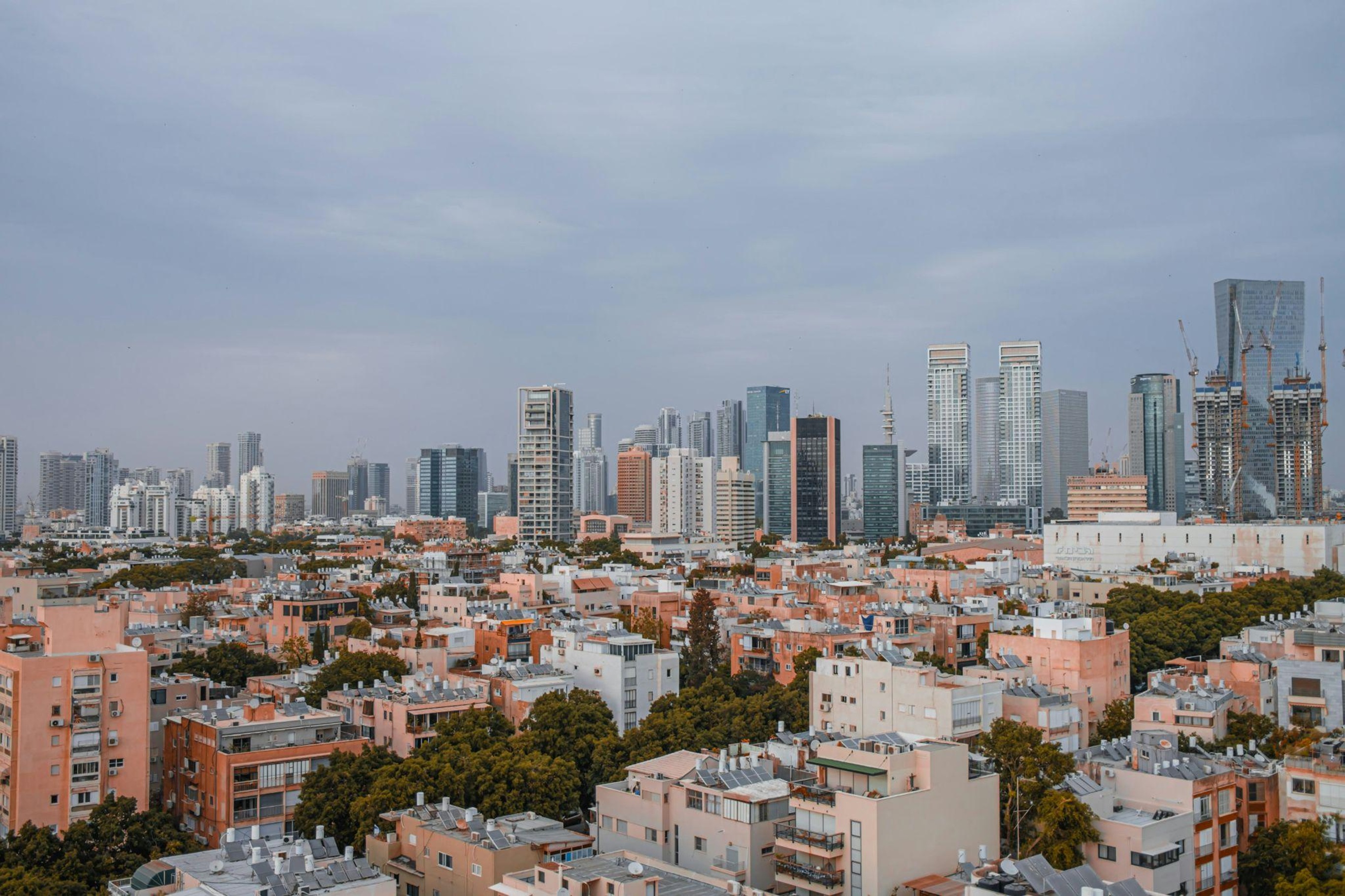
Exploring the best neighborhoods in Miami reveals a city with opportunities as diverse as its culture. Each area offers unique advantages for renters, buyers, and investors, from luxury waterfront enclaves to vibrant urban districts. Some neighborhoods boast strong rental yields, while others provide long-term appreciation potential or lifestyle-driven amenities. Understanding the balance between value, convenience, and future growth is essential for making smart decisions in one of the country’s most dynamic real estate markets.
At HomeRiver Group, we’ve built a reputation for delivering measurable results to property owners while ensuring tenants enjoy well-maintained homes. With a nationwide portfolio that spans thousands of properties, we bring unmatched efficiency, compliance expertise, and tenant placement strategies. Our combination of advanced technology and local market knowledge gives investors confidence that every property performs at its best while residents benefit from responsive and reliable service daily.
In this blog, we will explore the top neighborhoods in Miami, what makes them attractive for buyers, renters, and investors, and the key factors to consider when deciding where to place your next real estate opportunity.
Top Miami Neighborhoods For Buying, Renting, And Investing
Miami’s vibrant neighborhoods cater to various renters, buyers, and investors. Each community offers a unique combination of amenities, culture, and long-term value. Here’s a closer look at several standout areas:
Brickell
Brickell is Miami’s financial heartbeat, popular among young professionals seeking luxury high-rise condos and seamless access to top employers. The rental market is especially active, with short vacancy times and steady demand. Brickell’s upward trajectory in property values and rental rates makes it a compelling option for investors.
Coral Gables
Known for its historic charm and tree-lined streets, Coral Gables combines classic architecture with a strong sense of community. Families are drawn to its top-rated schools and walkable districts, while buyers appreciate the consistently strong resale values. Coral Gables’ strict zoning preserves its character, keeping inventory desirable and relatively scarce.
Wynwood
Art lovers and creative entrepreneurs have transformed Wynwood into one of Miami’s trendiest destinations. Warehouse apartments and lofts are in high demand, fueled by the neighborhood's vibrant arts scene and walkable nightlife. Investors benefit from steady appreciation and turnover, while renters enjoy a dynamic urban experience.
Coconut Grove
With its lush greenery and laid-back atmosphere, Coconut Grove appeals to those seeking a suburban vibe within city limits. The neighborhood’s mix of single-family homes, condos, and boutique rentals makes it versatile for buyers and renters. Access to waterfront parks and top schools adds to its appeal.
Downtown Miami
Downtown has experienced significant revitalization, attracting both new residents and large-scale investors. Condos and apartments offer striking skyline and bay views, while new developments raise the neighborhood’s profile. Consistent demand from short- and long-term renters supports stable occupancy and rental income.
Little Havana
Steeped in cultural heritage, Little Havana is popular among first-time homebuyers and savvy investors. The area’s affordability and potential for appreciation make it a smart entry point into the Miami market. Authentic eateries, live music, and annual events keep the neighborhood lively and inviting for renters and owners.
Why Miami Continues To Attract Homebuyers And Investors
Miami remains one of the country's most dynamic real estate markets, capturing ongoing attention from buyers, renters, and investors both domestically and abroad. Several factors drive this sustained appeal, shaping the city’s evolution into a sought-after urban destination.
Economic Growth And Job Opportunities
Miami’s diverse economy extends far beyond hospitality and tourism. In recent years, the city has become a financial, technology, and international business hub. Job growth in these sectors has created a steady influx of professionals seeking housing, driving demand for residential and investment properties across neighborhoods.
Year-Round Climate And Lifestyle
Miami’s subtropical climate, its cultural richness, and vibrant nightlife make it an attractive place for those seeking an active, outdoor lifestyle. From world-class beaches to acclaimed dining and arts scenes, Miami offers amenities and experiences that attract a wide spectrum of residents, from young professionals to retirees.
Favorable Tax Environment
Florida’s lack of state income tax and business-friendly regulations continues to draw individuals and corporations alike. High-net-worth buyers and investors often choose Miami to benefit from these financial advantages, boosting demand in the single-family and luxury condo markets.
International Demand And Infrastructure
With its strategic location as the “Gateway to the Americas,” Miami benefits from robust international demand, particularly from Latin America and Europe. The city’s international airports, seaports, and growing public transportation infrastructure make it increasingly accessible, further encouraging investment and residency.
Strong Rental Market
Miami’s population growth and global appeal help sustain a strong rental market, particularly in neighborhoods with easy access to downtown, beaches, and major employment centers. Steady rental yields and high occupancy rates provide powerful incentives for both short-term and long-term investors.
The convergence of these factors explains why Miami’s neighborhoods continue to command interest from homebuyers and investors alike, maintaining the city’s position as a premier real estate destination.
What Factors Define The Most Desirable Miami Neighborhoods
Miami’s neighborhoods offer a wide spectrum of living experiences, but only a select few consistently rank among the city’s most desirable. Understanding what separates these areas is essential for anyone considering buying, renting, or investing in Miami real estate.
Proximity & Accessibility: Prime neighborhoods offer easy access to major employment centers, top-rated schools, and Miami’s famed recreation spots. Efficient transit routes and proximity to highways, airports, or public transportation can also significantly make commutes and travel hassle-free.
Safety & Security: Low crime rates remain a non-negotiable requirement for many residents and investors. Desirable areas often prioritize community safety, benefit from robust neighborhood associations, and see active engagement from local law enforcement.
Quality Of Life: Look for vibrant urban centers, well-maintained parks, waterfront access, and an abundance of dining and entertainment options. Walkability is a high-value factor as well—neighborhoods that encourage outdoor activity or connect residents to local amenities tend to command premium interest.
Property Values & Stability: Historical trends in home prices and rental rates help predict neighborhood desirability. Areas with consistent appreciation or resilient demand through market cycles often attract buyers and investors looking for sustainable returns.
Community & Culture: Miami is a mosaic of cultures, and the most sought-after neighborhoods reflect this richness. Tight-knit communities, regularly scheduled events, and a strong neighborhood identity often become magnets for new residents.
Future Development: Upcoming renovations, city-backed infrastructure projects, and new retail or mixed-use developments can dramatically transform a neighborhood’s value proposition. Areas on the cusp of positive change typically attract those with an eye on long-term growth and upside potential.
What To Know About Property Values And Appreciation Trends In Miami
Miami’s real estate market stands out for its vibrancy and the unique dynamics that drive property values and appreciation. Over the past decade, the city has experienced steady growth, driven by population influx, international investment, and a burgeoning tech and finance scene. This growth has boosted prices in both established neighborhoods and emerging hotspots.
Differences In Neighborhood Appreciation Rates
Buyers and investors should understand that Miami neighborhoods appreciate at different rates. Highly sought-after areas like Brickell and Coral Gables have long histories of strong appreciation, thanks to their desirability, proximity to major business districts, and upscale amenities. In contrast, up-and-coming neighborhoods such as Little Haiti and Allapattah have seen rising prices fueled by urban revitalization projects and increased demand from young professionals.
Impact Of Waterfront Properties On Market Value
It’s also important to note that Miami’s coastal location adds another layer of consideration. Waterfront properties tend to command higher prices and demonstrate consistent demand, but they’re more susceptible to fluctuations based on environmental concerns and evolving insurance requirements.
Market Cycles And Economic Sensitivity
Market cycles play a significant role as well. Miami property values are sensitive to broader economic shifts, such as mortgage rate changes and buyer demographics. Historically, the area has shown resilience, often rebounding quickly from national downturns, partly due to sustained interest from out-of-state and international buyers.
Implications For Renters, Buyers, And Investors
For renters, understanding appreciation trends can help predict future rent increases, especially in growth corridors. For buyers and investors, staying ahead of neighborhood trends and closely monitoring development plans is key to maximizing returns on investment. With Miami’s diversity of neighborhoods and continuous influx of new residents, market opportunities remain robust for those ready to navigate the city’s ever-evolving real estate landscape.
How Professional Property Management Maximizes Returns
Miami’s real estate landscape demands both agility and expertise. For property owners, leveraging professional property management is a strategic move that directly impacts short—and long-term returns. Effective management can mean the difference between growth and stagnation in this competitive market, from maximizing tenant occupancy to optimizing rental rates.
Role Of Local Market Knowledge In Rental Success
Professional management begins with local market knowledge. Property managers understand trends unique to each Miami neighborhood, enabling accurate rental pricing and minimizing vacancy periods. They handle targeted marketing and thorough tenant screening, securing reliable renters who enhance property value over time.
Streamlined Operations And Risk Reduction
Streamlined operations go hand-in-hand with risk reduction. Professionals oversee regulatory compliance, detailed lease agreements, and routine maintenance, preventing costly oversight and preserving asset value. Their relationships with vendors and contractors allow for swift, cost-effective repairs, keeping properties in top condition and tenants satisfied.
Power Of Data-Driven Decision Making
Equally important is data-driven decision-making. Professional managers provide transparent financial reporting, tracking income and expenses with precision. Owners receive regular updates and analyses, empowering them to adjust strategies, reinvest, or expand their portfolios confidently.
Long-Term Benefits Of Proactive Management
In a market like Miami—dynamic, diverse, and ever-evolving—having a team dedicated to proactive management translates to stronger occupancy rates, reduced turnover, and ultimately, higher returns on investment.
Final Thoughts
Miami’s dynamic real estate market offers exceptional opportunities for renters, buyers, and investors seeking value and long-term growth. From the cultural energy of Wynwood to the beachside calm of Surfside, each neighborhood offers unique advantages. Evaluating proximity to work, lifestyle amenities, and future development is key to making a confident property decision.
At HomeRiver Group, we combine in-depth local expertise with the comprehensive capabilities of a national property management leader. Whether you’re searching for a primary residence, a promising investment, or the right rental for your lifestyle, our team guides you through every step. We’re committed to helping clients maximize returns, streamline property operations, and enjoy peace of mind, no matter which Miami neighborhood you call home.
HomeRiver Group delivers exceptional service and insight throughout your Miami real estate journey by prioritizing your unique goals and leveraging our extensive local network. Let’s make your next move your best one yet.
Read Also:
Frequently Asked Questions About Best Neighborhoods In Miami
Which Miami neighborhoods are best for families?
Several Miami neighborhoods stand out for families, driven by strong schools, green spaces, and a welcoming community feel. Pinecrest, Coral Gables, and Palmetto Bay are consistent favorites due to their excellent school districts, family-oriented amenities, and low crime rates.
What are the most affordable neighborhoods in Miami for buying a home?
Affordability is a common concern in a hot real estate market like Miami. Neighborhoods such as West Kendall, Cutler Bay, and Little Havana often provide more accessible entry points for first-time homebuyers and investors seeking value in single-family homes or condos.
What are the top luxury neighborhoods in Miami?
Miami’s luxury real estate scene is renowned worldwide. Neighborhoods like Fisher Island, Coral Gables, and Coconut Grove consistently rank at the top for upscale living. These areas offer premium amenities, gated communities, waterfront estates, and a high level of privacy.
Is Miami Beach a good place to invest in real estate?
Miami Beach remains a solid choice for real estate investment. The area’s global appeal, vibrant tourism sector, and steady demand for short-term and long-term rentals make it attractive. However, investors should assess local regulations and HOA rules, as they can impact rental strategies.
Where should young professionals live in Miami?
Brickell, Downtown, and Wynwood have become hubs for young professionals. These neighborhoods offer proximity to major employers, trend-setting restaurants, lively nightlife, and public transit options that suit a fast-paced urban lifestyle.
What are the safest neighborhoods in Miami?
Safety is a top priority for many buyers and renters. Pinecrest, Coral Gables, and Key Biscayne frequently top the list for low crime rates and community policing. These neighborhoods also tend to offer excellent walkability and active neighborhood associations.
How is the rental market in Brickell?
Brickell’s rental market is highly competitive and dynamic, given its status as Miami’s financial district. Luxury high-rises, walkability, and a wealth of amenities drive high demand from professionals. Rental rates can be above average, but the return on investment is often strong for landlords.
Are there up-and-coming neighborhoods for investment in Miami?
Investors looking for growth potential are paying close attention to Allapattah, Little River, and Miami’s Upper East Side. These neighborhoods are experiencing revitalization, infrastructure investment, and an influx of new businesses—factors that suggest positive long-term prospects.











